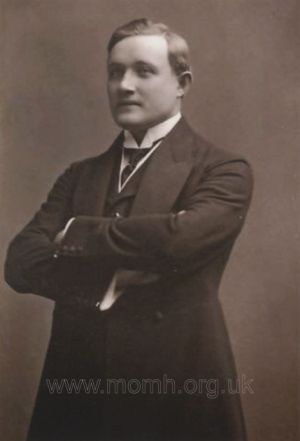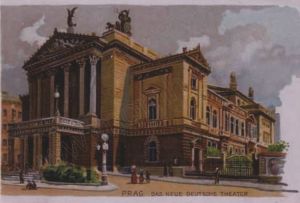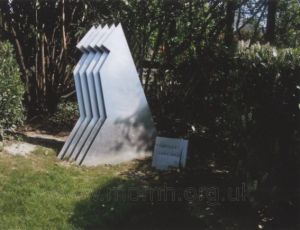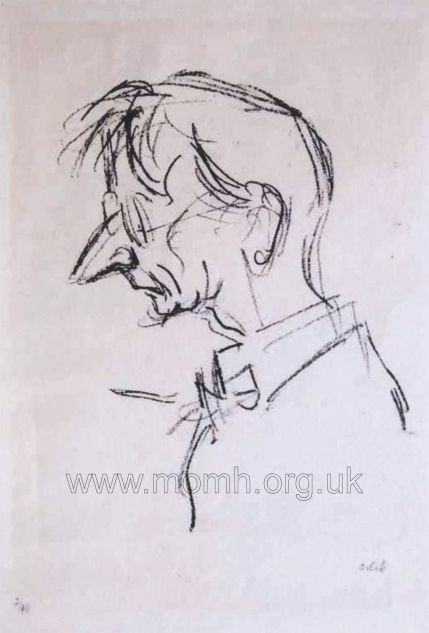Exhibition
Featured Links
Alexander von ZEMLINSKY: Eine Florentinische Tragödie
February 2017
ALEXANDER VON ZEMLINSKY : Eine florentinische Tragödie (first performed Stuttgart, 30 January 1917)
Until relatively recently Zemlinsky (b.Vienna, 14 October 1871; d.New York, 15 March 1942) was regarded as a mere footnote in musical history; if remembered at all, he was thought of as the teacher of Schoenberg, rather than as a composer and conductor in his own right. Fortunately, with the re-examination of all the music written in the first decades of the 20th century – especially that which was suppressed by the Nazis – his considerable gifts are now being properly recognised and his music can be heard in concert halls and opera houses around the world. This one-act opera is one of his finest creations.
Overshadowed by the so-called Second Viennese School Zemlinsky, like many of his Jewish contemporaries, suffered the trauma of enforced exile. After fleeing Berlin in 1933, he returned to Vienna before leaving Europe altogether, following the Anschluss in March 1938. He finally reached America in 1939, but unable to speak much English and in very poor health, he died in reduced circumstances just a few years later.
How different his early career had been. It was no less a figure than Brahms who first saw his potential and arranged the publication of the early Trio, Op.3 and Quartet, Op.8 with his own publisher Simrock. Zemlinsky’s reputation as a teacher also quickly grew. Not only had he given the largely self-taught Schoenberg lessons (though details of these are somewhat vague), he had also been the teacher (and briefly the lover) of Alma Schindler (until she met and married Mahler) and, perhaps most significantly, he had at Mahler’s suggestion been the main teacher of the wunderkind Erich Wolfgang Korngold.
Encouraged by Mahler (who conducted the successful world premiere of his second opera Es war Einmal) and by Richard Strauss, Zemlinsky also became a renowned conductor. By the time he came to write Eine florentinische Tragödie he was already the composer of a number of highly individual works, including two symphonies, many collections of songs, Die Seejungfrau (a fantasy for large orchestra) and a fine body of chamber works. Eine florentinische Tragӧdie was his sixth opera, begun early in 1914 and completed on 14 March 1916. By this time he had already left Vienna (following Mahler’s death in 1911) to become director of the Neues Deutsches Theater in Prague, a position he retained until 1927, and where he gave numerous important premieres of contemporary works – including Schoenberg’s Erwartung in 1924.
(Please click the thumbnails below to view larger image)
Zemlinsky with Schoenberg in Prague, [c.1917]. The Brendan G Carroll Collection.
Eine florentinische Tragӧdie is set in Florence at the height of the Renaissance. It is based on the German translation of an incomplete play from 1893 by Oscar Wilde, and its subject reflects a prevailing fascination with Renaissance tragedies during this period. Schillings’ Mona Lisa (Exhibition of the Month, September 2015), Korngold’s Violanta (Exhibition of the Month, March 2016) and Schreker’s Die Gezeichneten were all composed around this time. Curiously, Schillings conducted the world premiere of Eine florentinische Tragӧdie in Stuttgart (January 30, 1917) while Zemlinsky conducted the world premiere of Mona Lisa also at Stuttgart (26 September 1915).
The story is as follows:
Simone, a Florentine merchant, returns home one evening after a business trip to find his wife Bianca in the company of a handsome young stranger, Guido Bardi, son of the Duke of Florence. Simone realises immediately the nature of the situation, but decides to feign ignorance and begins to play a deadly game with Bianca’s young lover. As the drama unfolds and the tension builds inexorably Simone becomes ever more dangerous and threatening, while Guido inadvertently reveals his true feelings for Bianca.
Ultimately, Simone forces the young man into buying some of his costly fabrics, then persuades him to drink wine with him and finally, revealing his hand, challenges him to a duel. After wounding him, Simone strangles the prone Guido to death with his bare hands. Bianca had been constantly urging Guido to kill her husband, but now, impressed by Simone’s prowess and strength, is filled with joy and admiration, saying “Why did you never tell me you were so strong?” Simone, aware of her beauty almost for the first time, answers “Why did you never tell me you were so beautiful?” The two embrace in tender reconciliation, and the opera ends serenely, as the curtain falls.
This passionate ménage à trois is set to some of Zemlinsky’s most voluptuous music, supported by a harmonic palette that lies somewhere between Richard Strauss at his most extravagant and the more bi-tonal excesses of Schreker and Korngold. Yet, while sensing the influence of these composers, one is always aware of Zemlinsky’s own individual voice.
The opera opens with a dramatic prelude, its striking trumpet fanfare reminiscent of the violent opening of Elektra. This highly effective prelude (later published separately) was Zemlinsky’s solution to the fact that the first scene of Wilde’s play is missing. It apparently depicted an erotic love scene between Guido and Bianca and, rather than ask a librettist to write a new replacement scene, Zemlinsky presents the love scene in purely musical terms, much as Strauss did in the prelude to Der Rosenkavalier. It sets the scene for the drama that is to come.
The opera itself is composed in a continuous arc lasting barely an hour. There are no discernible arias or duets, apart from the moment where Simone walks into the garden for some fresh air, allowing Guido and Bianca to secretly express their feelings for one another (and plot Simone’s demise). Here, Zemlinsky creates some of the most erotic musical phrases of the whole score which he tellingly reprises for the concluding scene of reconciliation.
Many critics have drawn comparison with Salome and while it is true that some parts of the score bear resemblance (the sequence where Simone describes the beautiful fabrics he can offer Guido has a direct parallel with Herod’s ecstatic description of the lavish gifts he will bestow on Salome if she will dance for him), an even closer connection with late Mahler suggests itself. Zemlinsky himself declared that Mahler was his greatest influence. The exposed string and wind writing, the numerous pedal points that anchor the restless, tonally ambiguous harmony and the shifting, diffuse cadences are all redolent of Mahler. Zemlinsky is also especially fond of peculiarly dissonant counterpoint, which is a feature of Mahler’s later symphonies. It will come as no surprise that Zemlinsky worked closely with Mahler in preparing important performances of both his 7th and 8th symphonies.
Some regard the final coup de thêátre of Eine florentinische Tragӧdie (where Simone, having dispatched Guido, turns to Bianca intending to kill her and then embraces her instead), to deliberately copy the dramatic effect of Salome’s unexpected killing by Herod’s soldiers. “Now it is your turn” he says, only to see her coming towards him with open arms . Audiences (and critics) at the time were shocked when he succumbs and the two passionately embrace as the opera ends in sensual, elegiac mood. It is almost as if the wife only becomes sexually attractive to the husband upon becoming an adulterer, while the husband only achieves the same when he becomes a murderer.
Rudolf Ritter (tenor) who sang the role of Guido Bardi in the premiere at Stuttgart. The Brendan G Carroll Collection.
The world premiere of the opera took place in Stuttgart and it was paired with Bittner’s Das Hӧllisch Gold (Exhibition of the Month, October 2016). The cast was Helene Wildbrunn (Bianca), Rudolf Ritter (Guido) and Felix Fleischer-Janczak (Simone). Zemlinsky was less than impressed – he considered Schillings to be an incompetent conductor – but according to his biographer Horst Weber he was mostly satisfied with the opera as a stage work. Because of the war Stuttgart’s Hoftheater was forced to close and all subsequent performances cancelled. A month later Zemlinsky himself conducted eight performances of the opera in Prague (premiere 4 March), again paired with Bittner’s work, where it was very well received.
The Neues Deutsches Theater where Zemlinsky was principal conductor 1911-1927. He conducted Eine florentinische Tragödie at this theatre. The Brendan G Carroll Collection.
Following these first performances in Stuttgart and Prague, the opera finally reached the all-important Hofoper in Vienna on 27 April 27 (paired with Klein Idas Blumen, a now forgotten ballet by the Danish composer Paul von Klenau (1883-1946). Alma Mahler was in the audience.
As usual, unable to consider anything except through the prism of her own existence, she was incensed by what she perceived as a deliberate, albeit covert, representation of her scandalous, adulterous affair with Walter Gropius. This affair had driven Mahler to the couch of Sigmund Freud and many writers have suggested that it actually hastened his death. Whether she was right or not to see parallels with her own life, she wrote indignantly to Zemlinsky and hurt him deeply by agreeing with certain hostile critics (notably Max Kalbeck and Julius Korngold, father of his famous pupil).
Hugo Reichenberger (Zemlinsky’s successor at the Hofoper under Weingartner) conducted the work and the production was designed by the esteemed Wilhelm von Wymetal. However the opera was deemed unsuccessful and did not remain in the Vienna repertory beyond the 1917 season. Thereafter sporadic productions occurred in Leipzig (1922), Aachen (1924), Schwerin (1925), Freiburg (1927) and finally Brno (1928), before it vanished from the stage for fifty years.
Zemlinsky produced a number of significant works thereafter, including a further three operas. The finest of these is undoubtedly Der Zwerg (1922). This, like Eine florentinische Tragӧdie, with which it is now often paired, is based on a play by Oscar Wilde, The Birthday of the Infanta. The latter had been the subject of a ballet in 1908 by Schreker, who himself suggested it to Zemlinsky.
He also composed his much-admired Lyric Symphony in 1922-23 (the principal theme of its 3rd movement is notably quoted by Berg in his own Lyric Suite), a Sinfonietta and an exquisite cycle of orchestral lieder to texts by Maeterlinck. It is these works which are the most frequently heard today.
Zemlinsky’s final years were tragic ones. America was a profound culture shock for the ageing composer. He found the heat and noise of New York unbearable and soon, with the help of his wife’s brother Otto, he moved to a small apartment in the relative calm of the nearby suburb of New Rochelle. Zemlinsky had regular contact with some friends from Europe, which made him feel less isolated. These included his former pupil, the conductor Arthur Bodanzky, who unfortunately died at the end of 1939, but also with Hans Heinsheimer (now the US representative of his publisher, Universal Edition) and with the conductor Fritz Stiedry.
Zemlinsky also exchanged a few letters with Schoenberg, who by now lived in Los Angeles and who tried to persuade Zemlinsky to move to the West Coast. Sadly, two debilitating strokes meant that Zemlinsky could not immediately move to the more beneficial climate of California. They were to meet each other for one last time, when Schoenberg conducted Pierrot Lunaire in New York in November 1940. Zemlinsky died on March 15 1942. Although he was buried in New York, his widow arranged in 1985 (with the support of the Austrian Ministry of Culture) the transfer of his ashes to the Vienna Zentralfriedhof.
Monument commissioned by the Alexander Zemlinsky Fund from the Czech sculptor Josef Symon and unveiled in 1994. It replaced the plain wooden cross which had marked the spot for the previous nine years. Zentralfriedhof, Vienna. The Brendan G Carroll Collection.
The revival of interest in Zemlinsky gathered pace in the late 1970s, when the La Salle Quartet’s recording of his string quartets became a surprising best seller. Eine florentinische Tragӧdie was revived for the first time since 1928 at Kiel, in 1977, and a major production was mounted at the Biennale in Venice in 1980, which was issued as its first recording .
It received its belated American premiere in the summer of 1984 at Santa Fe (where it was paired with his pupil Korngold’s Violanta) and since then, it has been heard in Hamburg, Edinburgh, Cologne and Los Angeles among other cities, and there have been four further fine recordings.
To mark his fiftieth birthday in 1921, a special Zemlinsky edition of the Prague journal Auftakt was published, with contributions and tributes from Franz Werfel, Korngold, Schreker and Schoenberg – who, believing that one day the world would properly recognise the composer, ended his tribute with the famous remark : ‘Zemlinsky can wait‘.
As the 150th anniversary of Zemlinsky’s birth approaches in 2021, one must hope that his long wait will at last be over and that his major works, especially Eine florentinische Tragӧdie, will become a permanent part of the standard repertory.
A caricature by Emil Orlik. The Brendan G Carroll Collection.
Brendan G Carroll © 2017








